Abstract
High titers of a noninducible bacteriocin were produced by Clostridium acetobutylicum in a molasses fermentation medium used for the industrial production of solvents. Release of the bacteriocin towards the end of the exponential growth phase was accompanied by lysis of the culture and inhibition of the production of solvents. The producer cells were sensitive to the bacteriocin, which only affected other C. acetobutylicum strains and a Clostridium felsineum strain. The thermolabile bacteriocin was not inactivated by protease enzymes and had no optimum stability between pH 4 and 5. The sedimentation coefficient of the bacteriocin was 6S.
Full text
PDF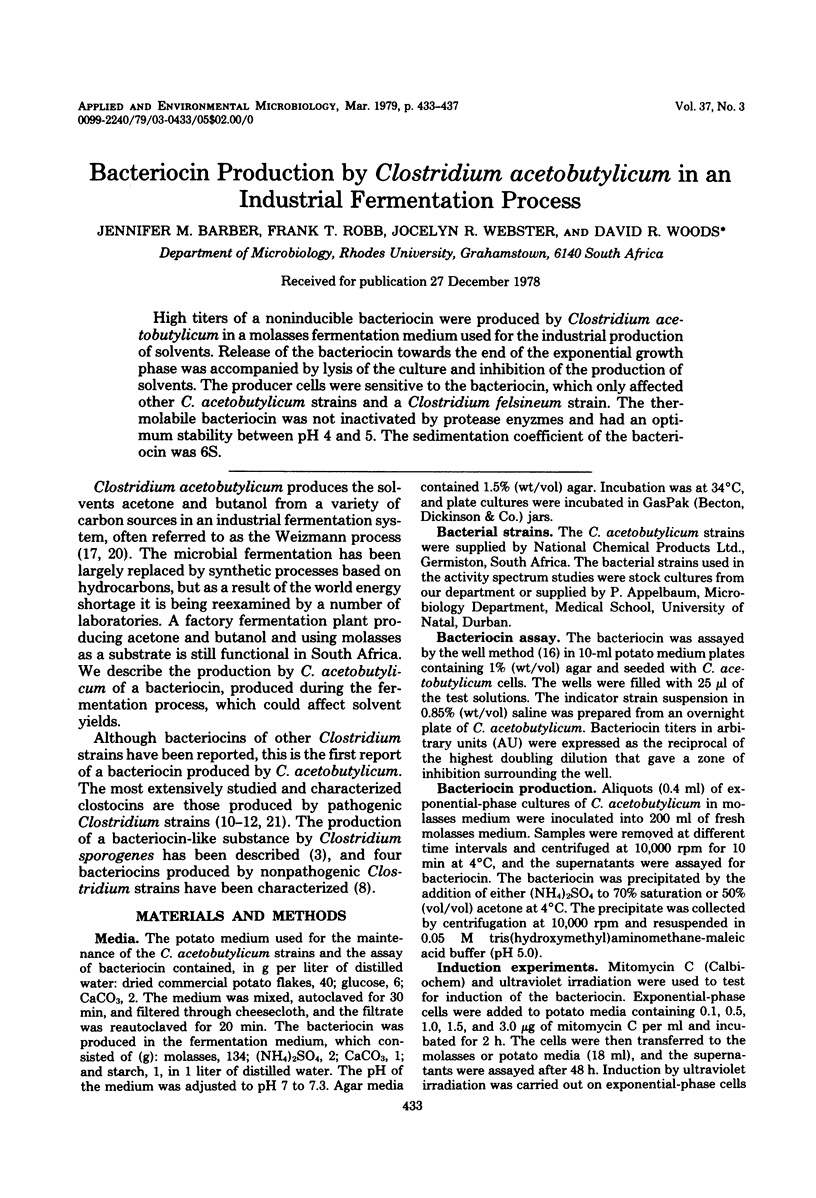
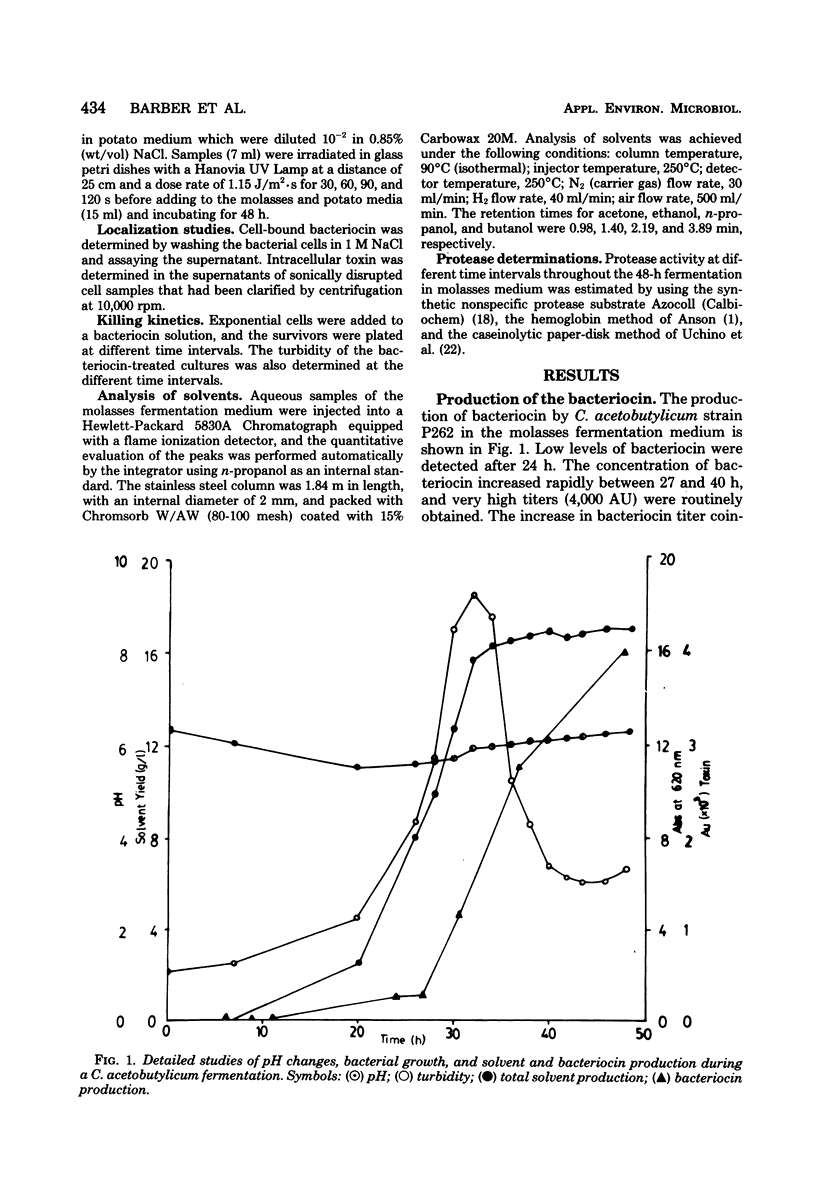
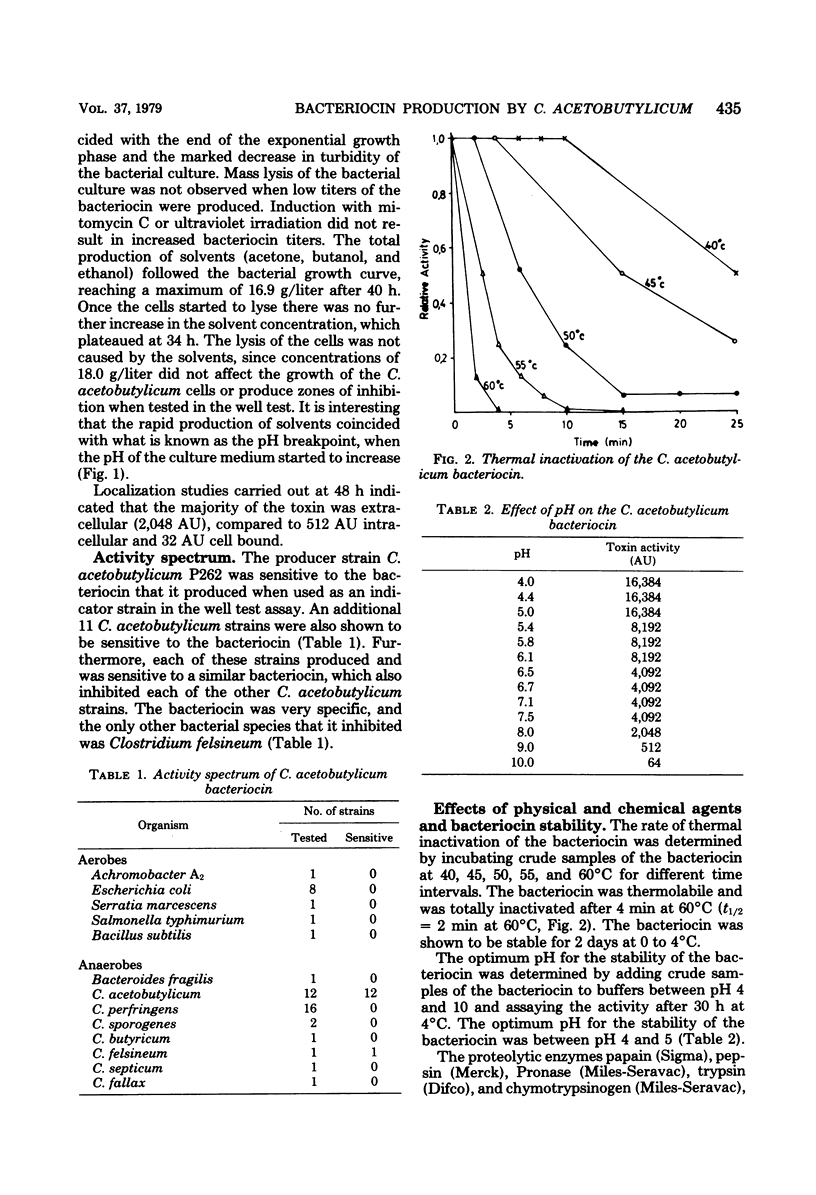
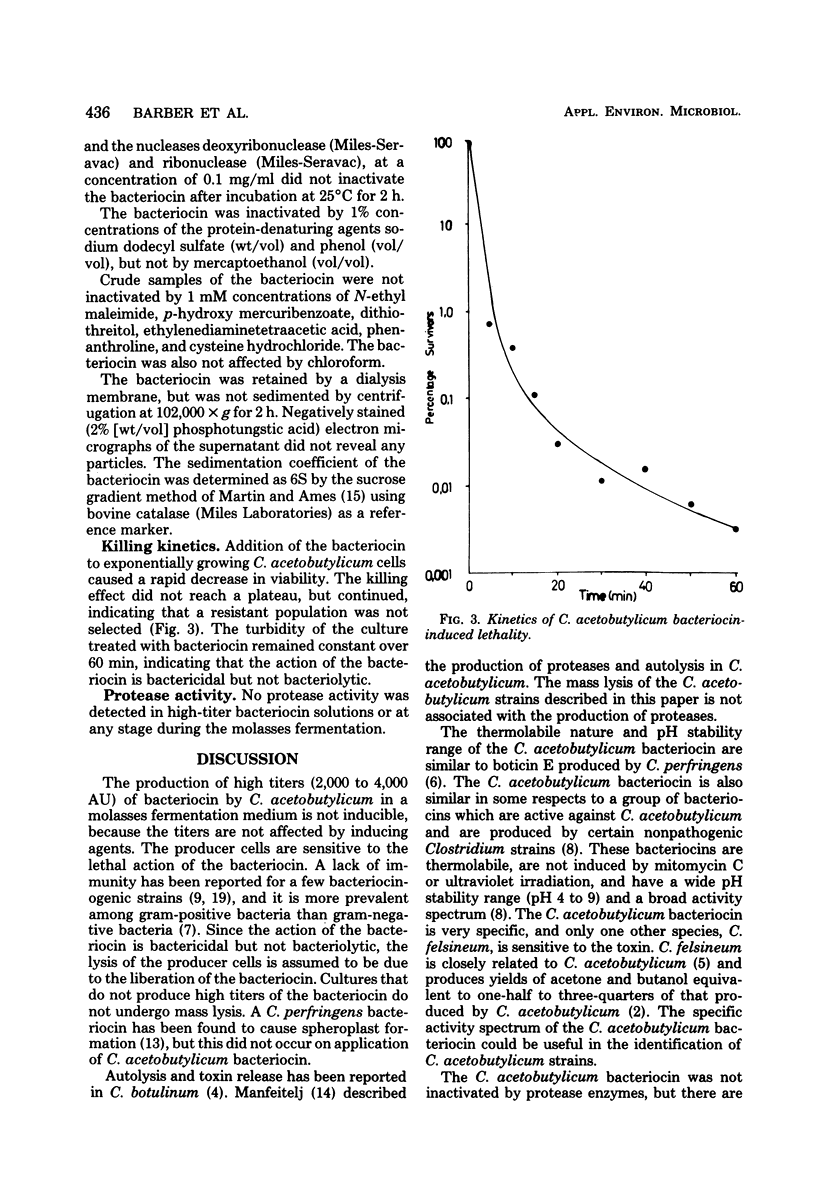
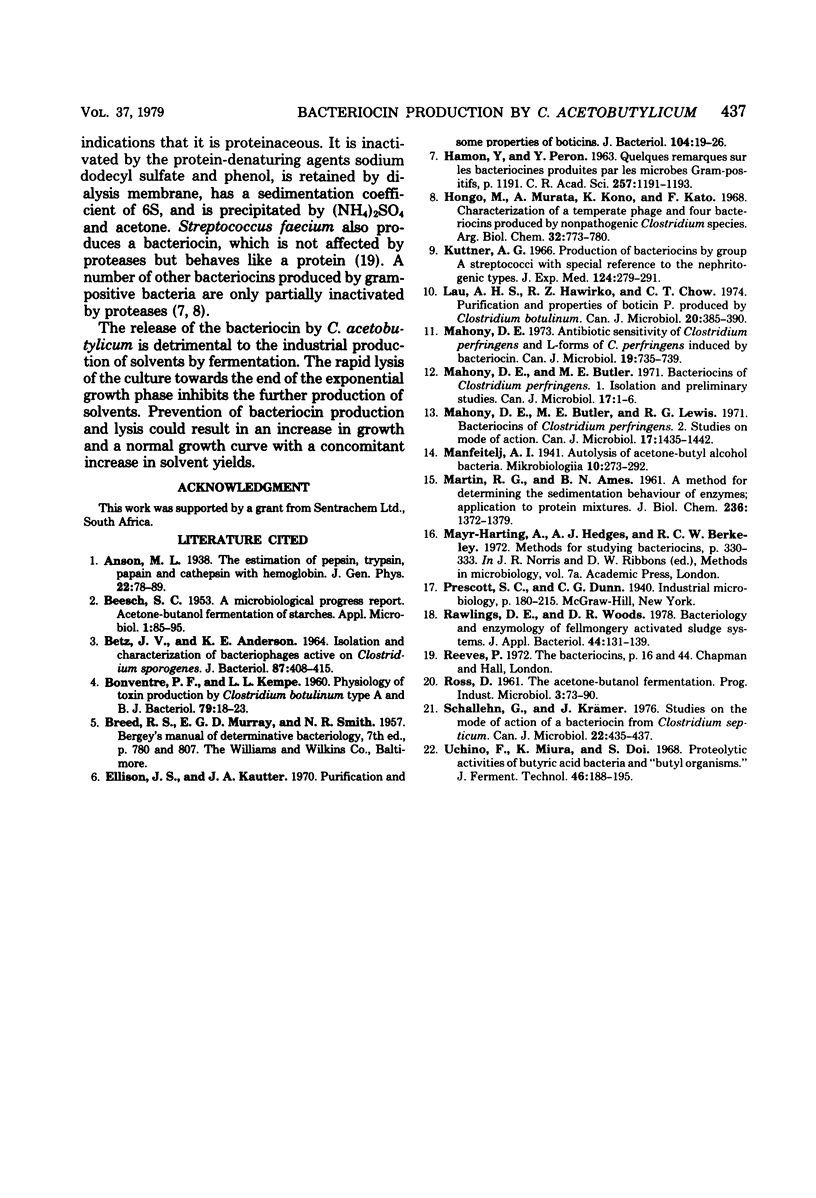
Selected References
These references are in PubMed. This may not be the complete list of references from this article.
- BEESCH S. C. Acetone-butanol fermentation of starches. Appl Microbiol. 1953 Mar;1(2):85–95. doi: 10.1128/am.1.2.85-95.1953. [DOI] [PMC free article] [PubMed] [Google Scholar]
- BETZ J. V., ANDERSON K. E. ISOLATION AND CHARACTERIZATION OF BACTERIOPHAGES ACTIVE ON CLOSTRIDIUM SPOROGENES. J Bacteriol. 1964 Feb;87:408–415. doi: 10.1128/jb.87.2.408-415.1964. [DOI] [PMC free article] [PubMed] [Google Scholar]
- BONVENTRE P. F., KEMPE L. L. Physiology of toxin production by Clostridium botulinum types A and B. I. Growth, autolysis, and toxin production. J Bacteriol. 1960 Jan;79:18–23. doi: 10.1128/jb.79.1.18-23.1960. [DOI] [PMC free article] [PubMed] [Google Scholar]
- Ellison J. S., Kautter J. A. Purification and some properties of two boticins. J Bacteriol. 1970 Oct;104(1):19–26. doi: 10.1128/jb.104.1.19-26.1970. [DOI] [PMC free article] [PubMed] [Google Scholar]
- HAMON Y., PERON Y. QUELQUES REMARQUES SUR LES BACT'ERIOCINES PRODUITES PAR LES MICROBES GRAM-POSITIFS. C R Hebd Seances Acad Sci. 1963 Jul 29;257:1191–1193. [PubMed] [Google Scholar]
- Kuttner A. G. Production of bacteriocines by group A streptococci with special reference to the nephritogenic types. J Exp Med. 1966 Sep 1;124(3):279–291. doi: 10.1084/jem.124.3.279. [DOI] [PMC free article] [PubMed] [Google Scholar]
- Lau A. H., Hawirko R. Z., Chow C. T. Purification and properties of boticin P produced by Clostridium botulinum. Can J Microbiol. 1974 Mar;20(3):385–390. doi: 10.1139/m74-059. [DOI] [PubMed] [Google Scholar]
- MARTIN R. G., AMES B. N. A method for determining the sedimentation behavior of enzymes: application to protein mixtures. J Biol Chem. 1961 May;236:1372–1379. [PubMed] [Google Scholar]
- Mahony D. E. Antibiotic sensitivity of Clostridium perfringens and L-forms of C. perfringens induced by bacteriocin. Can J Microbiol. 1973 Jun;19(6):735–739. doi: 10.1139/m73-118. [DOI] [PubMed] [Google Scholar]
- Mahony D. E., Butler M. E. Bacteriocins of Clostridium perfringens. 1. Isolation and preliminary studies. Can J Microbiol. 1971 Jan;17(1):1–6. doi: 10.1139/m71-001. [DOI] [PubMed] [Google Scholar]
- Mahony D. E., Butler M. E., Lewis R. G. Bacteriocins of Clostridium perfringens. 2. Studies on mode of action. Can J Microbiol. 1971 Nov;17(11):1435–1442. doi: 10.1139/m71-228. [DOI] [PubMed] [Google Scholar]
- ROSS D. The acetone-butanol fermentation. Prog Ind Microbiol. 1961;3:71–90. [PubMed] [Google Scholar]
- Schallehn G., Krämer J. Studies on mode of action of a bacteriocin from Clostridium septicum. Can J Microbiol. 1976 Mar;22(3):435–437. doi: 10.1139/m76-066. [DOI] [PubMed] [Google Scholar]


